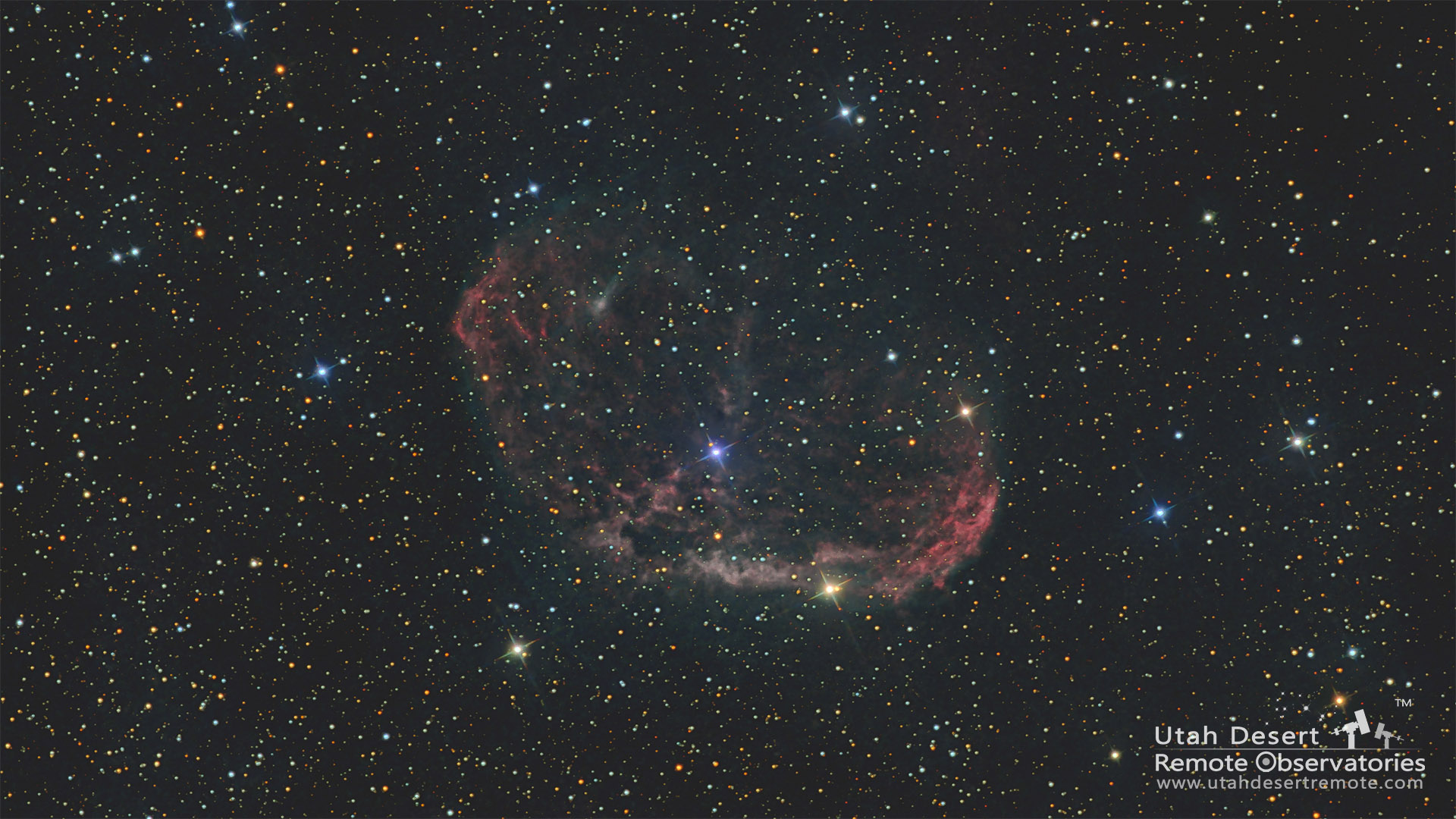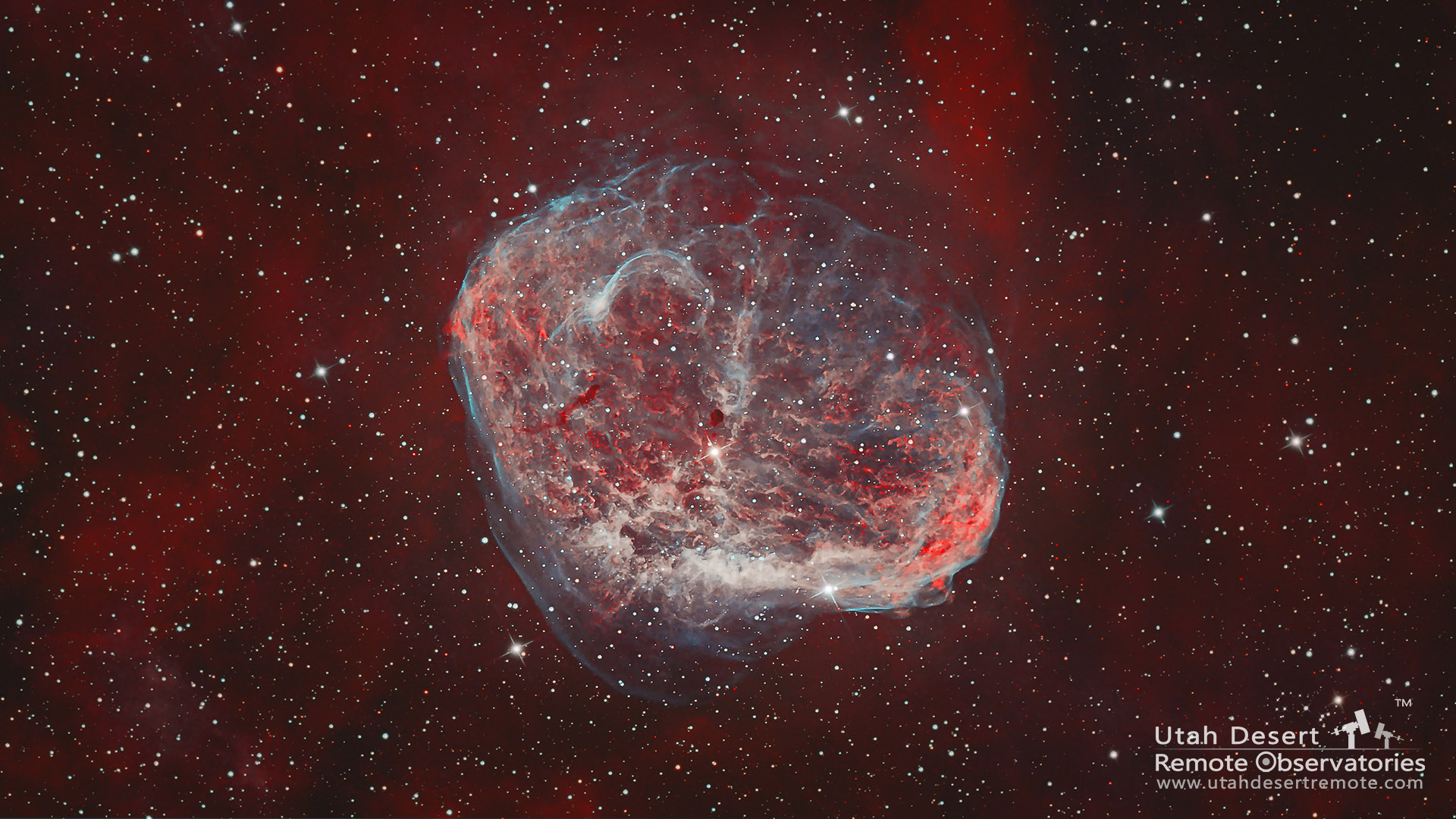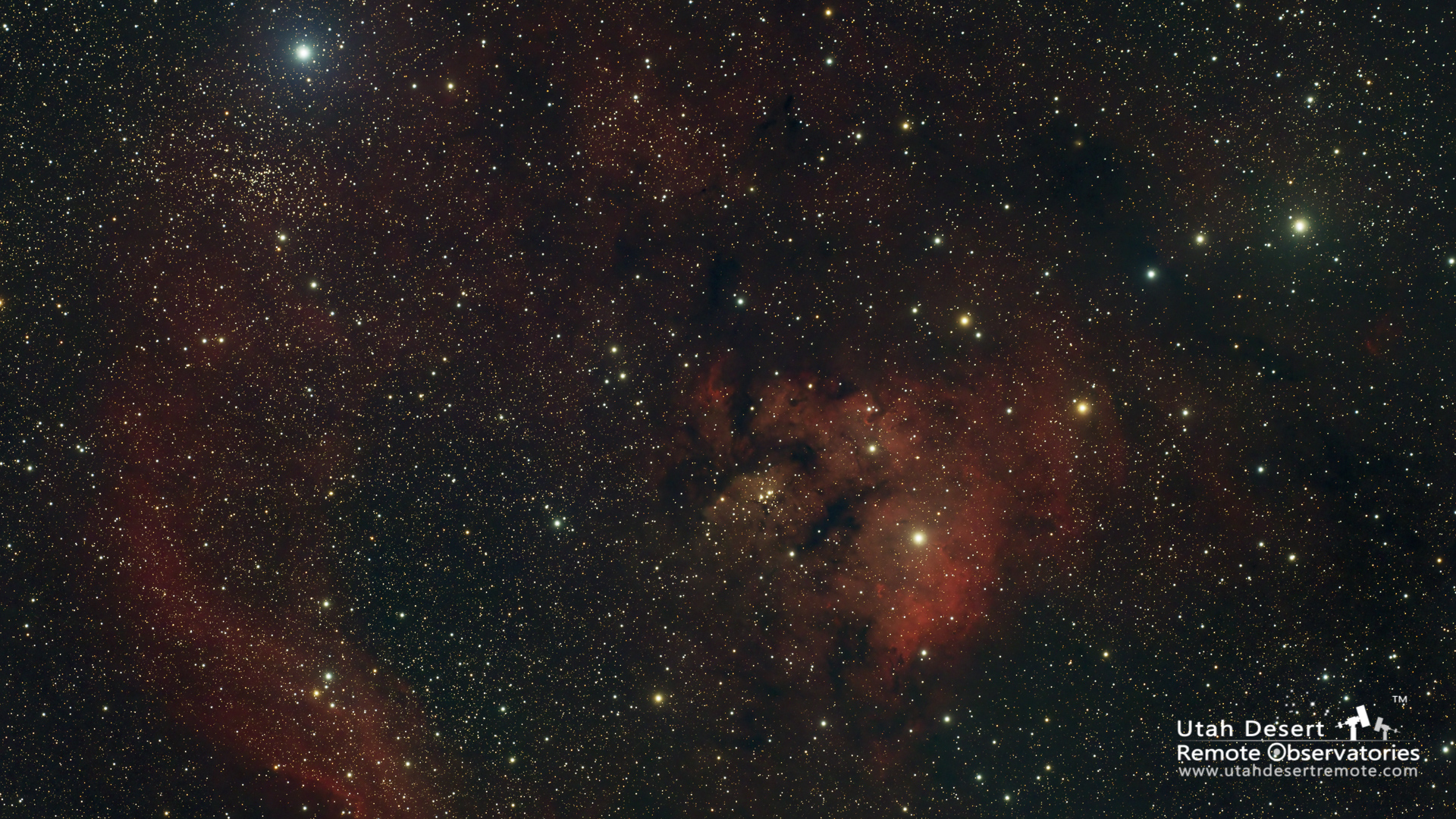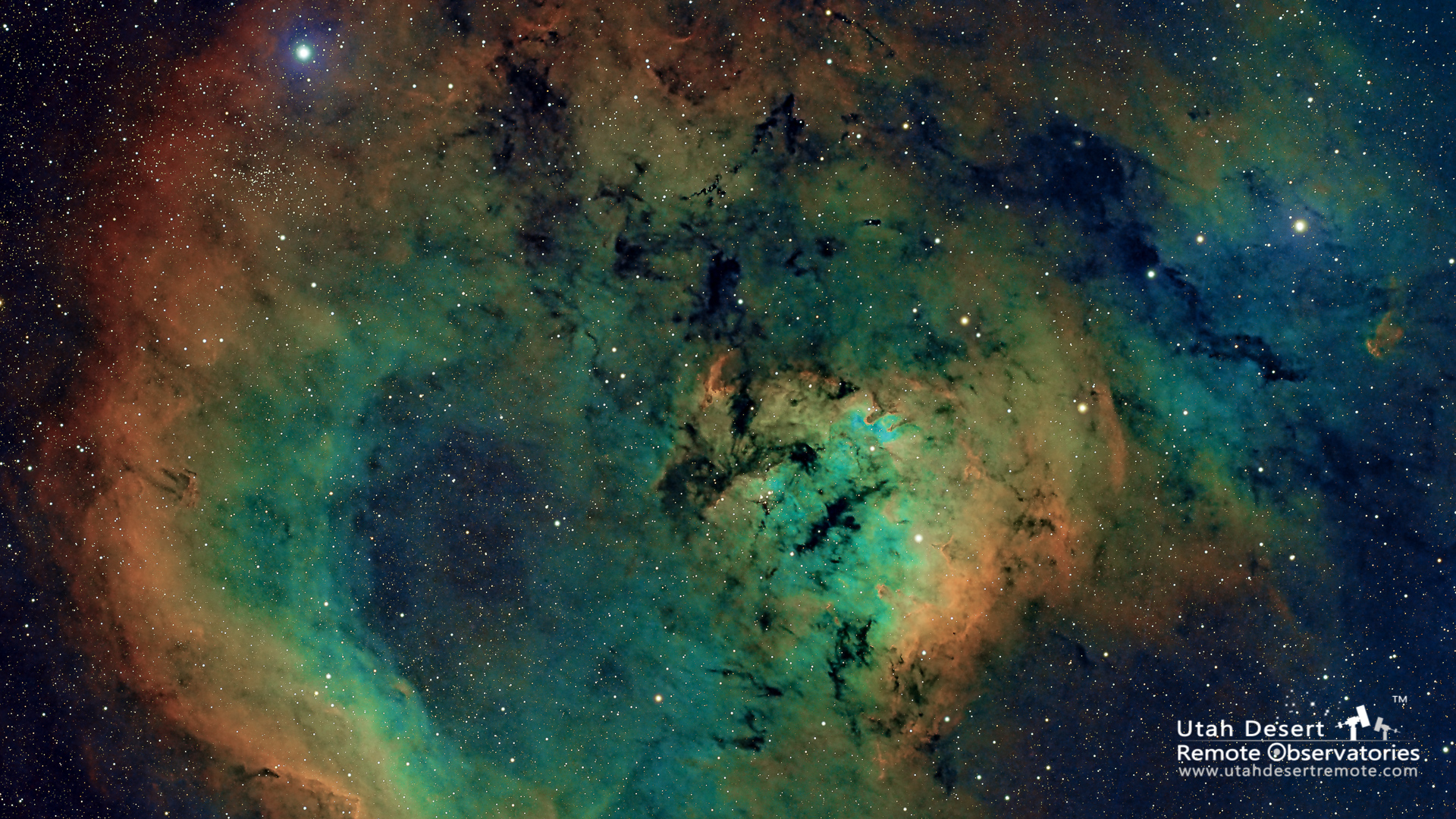This comparison featuring the Crescent Nebula shows the value of narrowband imaging compared to a simple RGB image. Drag the slider back and forth to really see the differences.


So, what’s the difference between broadband and narrowband imaging? It has to do with how much of the light spectrum you capture. Visible light is a range of colors from blue to red – and everything in between. Simple color photography like you might do with your smart phone captures that broad range of colors – basically a broad band of colors. Technically it captures three rather broad bands of color, all the reds, all the greens and all the blues. By combining the reds, greens and blues you get a full color image. Broadband imaging is simply taking a color photo of an astronomical feature.
The narrowband imaging process is very similar but instead of capturing “all the reds, all the greens and all the blues” you use a glass filter that blocks all of the light except for one very narrow band, or color, of light. Ionized gas emits light in very specific colors, or wavelengths. Hydrogen alpha is a specific color of red while oxygen is a specific color of blue. Filters tuned to just those exact colors allow the camera to capture just that specific band of light without it being washed out or hidden by other colors. The astrophotographer can then combine images taken with different narrowband filters to create the final color image. Depending on how the colors are mapped they may be close to natural color or may be quite different. The astrophographer typically attempts to find a color balance that clearly shows the regions of different gases as well as their artistic vision.


Narrowband imaging has a couple of distinct advantages. First of all it allows us to image structures that we wouldn’t otherwise be able to see or photograph because it’s washed out by other light. Secondly it is far less affected by light pollution. While it might be very difficult to get a good broadband image from a big city it is possible with narrowband filters. It’s even less affected by moonlight so you can image on more nights.
People frequently ask if it’s real. My answer is, “Yes, it’s real, but it’s different from what you see.” Consider the example of an X-ray of a broken arm. The broken arm is real and the X-ray image is real – but it’s not the way you see it with your eyes. We’re using a special wavelength of light (X-ray) to create an image of the bone with less interference from the visible light bouncing off of the surrounding skin.
